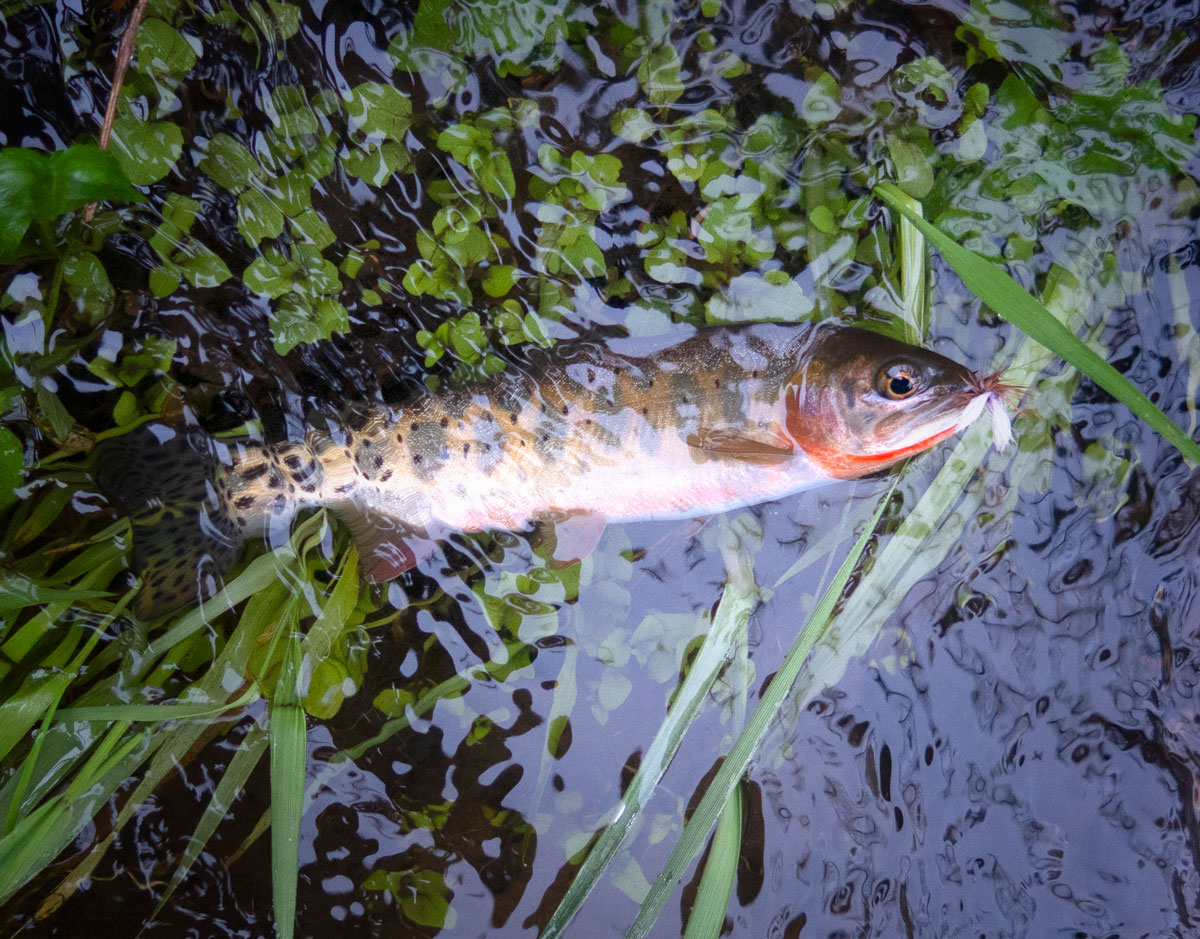By TONER MITCHELL
The Rio Chiquito near Ranchos de Taos is your typical New Mexican trout stream—narrow, brushy, and packed with trout. It is where I caught my very first trout on my own. I was about nine years old and the fish, a brown trout, ate a yellow grasshopper fly.
At such a young age, I had yet to appreciate how far brown trout had advanced since they were first introduced to North America from Germany and Scotland (1880s), nor how far native trout had fallen as a result. As recently as the 1960s, Rio Grande cutthroat trout were abundant throughout the entire length of the Rio Chiquito. Not long after that, brown trout became dominant in mile after mile of that stream. The domination was complete. Since my childhood, I have been able to find cutthroats only at the very top of the watershed, above a place called Borrego Crossing.
Before brown, rainbow, and brook trout were introduced to our region, the Rio Grande cutthroat trout was the only trout species in the entire Rio Grande watershed. The fish holds the distinction as the first New World trout ever seen by Europeans (Coronado’s army found a specimen near the Village of Pecos in 1541). If ever there was a fish that symbolizes Spanish settlers making a go of it in New Mexico, the Rio Grande cutthroat is it.
Recent angler reports indicate that the cutthroat is on the ropes in several Taos County streams, most notably the Rio Chiquito above Borrego Crossing south of Garcia Park in the Camino Real District. Columbine Creek near its confluence with Placer Creek is also in deep “trouble.” Adding to the problem is the fact that neither the US Forest Service nor the Department of Game and Fish have enough resources to tackle the brown trout invasion.
We all love brown trout. They’re the perfect combination of challenging, beautiful, and mean, but we’re fast approaching a point when they will be the only trout we’ll be able to fish for. We’re at a “calling all cars” moment, where capable small creek anglers should consider spending some time on Chiquito and Columbine (again, above Borrego Crossing and at Placer Creek) removing brown trout and releasing cutthroats. Bring a friend, keep your limit.
The most important factor in catching brown trout, smart as they are, is concealing your presence. Break up your silhouette by casting from the brush. Camo clothing is important, as is eliminating fast movements. Don’t cast and expect any time to pass before a fish bites your fly or lure; fish in small streams either jump on opportunities right away, or they don’t store enough fat to make it through the winter. So once your fly hits the water, expect it to get eaten. Once you know the fish is a brown, lift it onto the bank so as not to let it escape. Opposite strategy for cutthroats: if you know it’s a cut, try to minimize stress by leaving it in the water. Believe it or not, there are some big browns in those creeks. Big browns eat small cutthroat, so removing them has the greatest impact.
Competition with non-native trout is the number one cause of native trout extirpation. So, keep a few browns to give our state fish a fighting chance.



